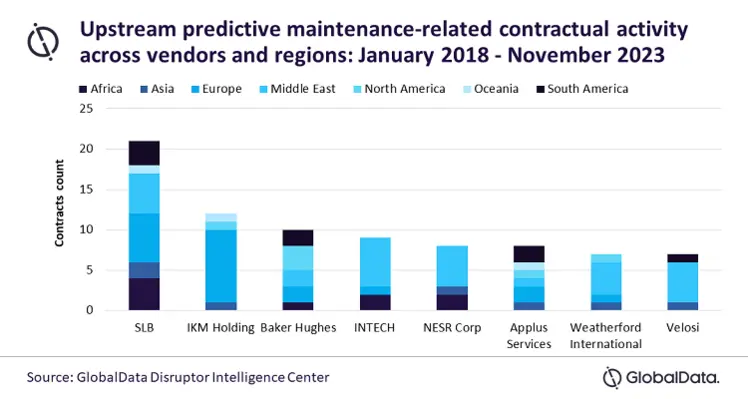GlobalData, a leading data and analytics company, has highlighted the critical role of technologies such as AI, machine learning and the internet of things (IoT) in predictive maintenance strategies in its latest report
To achieve operational longevity, timely maintenance is necessary to prevent expensive repair works and unplanned production outages. Predictive maintenance helps improve productivity through timely maintenance intervention.
Apart from helping set up more agile operations in newer projects, predictive maintenance also helps extend the lifetime of ageing assets. It also aids to detect unwanted leakages that contribute to emissions. Thus, it can help oil and gas companies to efficiently fulfil their ESG obligations. Predictive maintenance capability helps maximise the operational life of the equipment and infrastructure by using an innovative data-driven approach to assess the state of the field equipment or infrastructure and provide a detailed picture of its expected operating life. It comes into play in varied ways for upstream, midstream, and downstream sectors of the oil and gas value chain. It can detect early signs of equipment deterioration, such as corrosion, deformities, and misalignment, and alert the technicians to take preventive or corrective actions.
Several prominent integrated oil companies (IOCs) have actively sought to digitalise their operations by employing technologies such as AI, IoT, cloud computing, big data, and others. This has led to the generation of a vast amount of data from routine oil and gas operations. Growing digitalisation has facilitated the adoption of predictive maintenance technologies in the industry. As digital technologies have become more affordable, the use of IoT and artificial intelligence (AI) has improved predictive maintenance strategies. Cloud computing technologies offer the benefits of connectivity and collaboration to the geographically widespread assets of oil and gas players.
Ravindra Puranik, oil and gas analyst at GlobalData, commented, “Predictive maintenance enables decision-makers to schedule maintenance activities without affecting the normal functioning. These insights can also be utilised to determine whether any machinery or infrastructure requires a substantial overhaul. Predictive maintenance strategies have evolved in the oil and gas industry to harness newer digital technologies for improved prediction models.”
“A day of unplanned downtime of an oilfield, pipeline, or refinery can incur over a million dollars in losses for the operator. Predictive maintenance helps to identify potential problem areas and resolve them in a timely manner. It could be profitable to implement enterprise-wide predictive maintenance strategies in the long-run.”
“The proficiency of digital technologies has grown tremendously in the last few decades. The advancements in sensors, connectivity networks, and computing power, offer a strong foundation for the adoption of predictive maintenance strategies.”
GlobalData’s thematic report, “Predictive Maintenance in Oil and Gas,” explores the use of predictive maintenance technologies in the oil and gas industry. It benchmarks the oil majors, such as BP, Chevron, ExxonMobil, TotalEnergies, and Shell, for their adoption of these technologies and also identifies the various trends influencing predictive maintenance.









